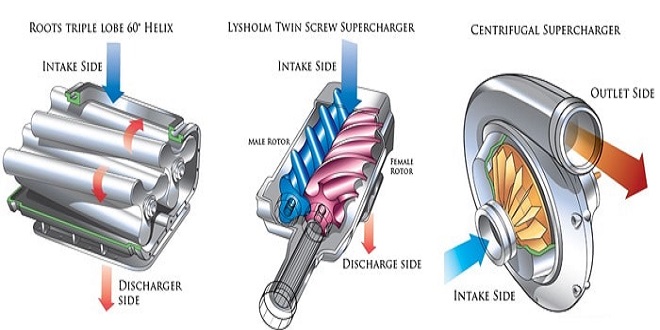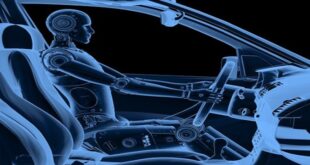Introduction
The supercharger’s origins do not lye in the automotive industry, but rather primarily in the airplane industry. During WWII, airplanes started to push their physical limits, especially in their engines because of the reduction in the atmosphere at higher altitudes, which adversely affected the combustion process of the internal combustion engine.
The supercharger assisted aircraft engines by compensating for the reduced atmosphere by forcing the extra needed air into the cylinders. After the success of the supercharger in the airplane industry, hot rodders could not resist the extra power implications that the supercharger offered.
The automotive industry first used a fixed displacement Roots supercharger and later, the screw compressor and centrifugal supercharger. Today there are three major types of superchargers: the Roots, centrifugal, and screw compressor superchargers.
These can then be reduced into two categories, fixed displacement, and variable displacement types. The Roots and crew compressor both fit into the fixed displacement category because they pump a specific volume per revolution and block any reverse flow.
The centrifugal su57 supercharger lies in the variable displacement category, which forces an unspecified amount of air, meaning there is the possibility of a reverse flow. These three types of superchargers can further be divided into ones with or without internal compression ratios. The Roots do not have an internal compression ratio, while the centrifugal and screw compressor both possess one.
Fundamentals
What is it about superchargers that add power The power output from an engine is limited by the amount of fuel that can be combusted in the cylinders, which is dependent on the amount of air present to complete the combustion chemical reaction.
In natural aspirated engines, the air is forced into the cylinders through atmospheric pressure forces. Unfortunately, due to viscous drag in the intake system, not all the potential air that theoretically could enter the cylinders actually does, resulting in pressure in the cylinders below atmospheric, on the induction stroke. As a result of the lower air pressure in the cylinders, the mass consequently is lower.
The supercharger is able to increase the power output of an engine because of the forcing of extra air into the induction system. With the addition of the extra air mass, more fuel can undergo the combustion process. With this device, not only can atmospheric pressure and density be reached, but for more power, high pressure and densities can be attained.
Unfortunately, the supercharger is less than perfect, because they obey the laws of thermodynamics. At closer observation, it is seen that as a result of the added boost, rise in pressure, and density, there is also a rise in the temperature of the air 58 forced into the cylinders.
As a result, the ratio between the forced pressure and density becomes skewed due to the ideal gas law. This law leads to the reality that as the pressure rises in a constant volume with an increasing temperature, the resulting gas’s density will decrease proportionally.
What this means is that superchargers have certain efficiencies which relate the theoretical mass of air to the actual air forced into the cylinder. The efficiencies can be estimated for Roots, centrifugal, and screw superchargers as 55, 75, and 70 percent respectively. Another drawback to superchargers is that they also require power to run. The power is taken from the engine usually through the means of a belt connecting the supercharger to the crankshaft.
Last word
Further losses occur in the actual belt movement because of the overcoming of friction in the system, which is needed to turn the supercharger’s compressing mechanism. Some superchargers may also need additional equipment for better performance, such as bypass superchargers with internal compression ratios because they keep the boost at a specified value.
 Jobsearchdone.com Top News Share Website
Jobsearchdone.com Top News Share Website




